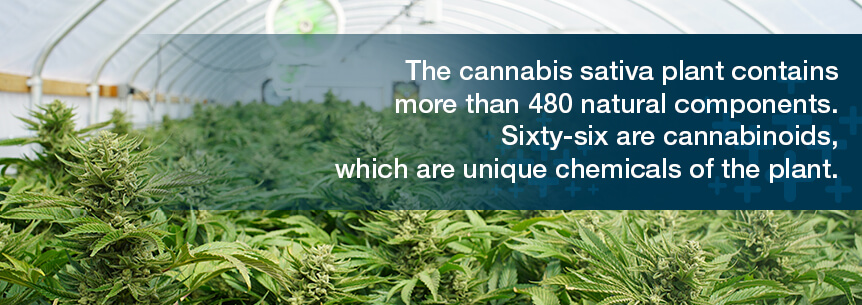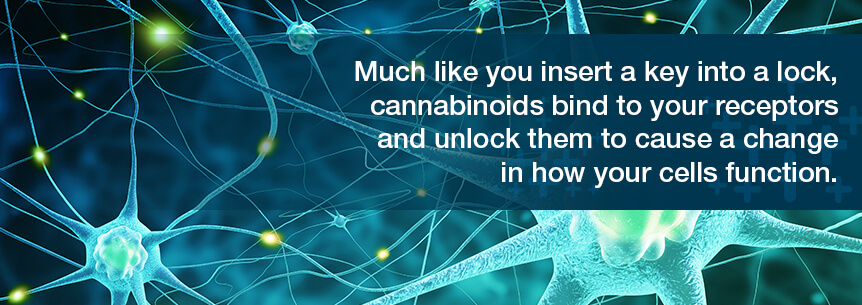You probably already know how marijuana affects you, but do you ever wonder how a single plant can produce so many different effects? From an enjoyable high to being able to treat various medical conditions, many of marijuana’s best qualities are due to cannabinoids. The medical pot plant creates various compounds naturally, and each has its own potential side effects and specific benefits.
Research is ongoing and continues to show promise of potential medical benefits from a variety of compounds. Getting an understanding of the various types of cannabinoids and how they affect you will provide you with more insight on the plant and its therapeutic benefits for our medical condition.
Cannabis has a whole range of chemical compounds in the plant comprising its characteristics. Chlorophyll in its leaves make the plant green, while terpenes provide aromas and flavors. However, cannabinoids are essential chemicals in cannabis.
Cannabinoids provide the marijuana plant with its medical properties. CBD, THC and other cannabinoids interact with various body receptors to deliver a whole range of different effects.

The cannabis sativa plant contains more than 480 natural components. Sixty-six are cannabinoids, which are unique chemicals of the plant. You’re probably already familiar with THC, as it is already researched and well known. It’s the cannabinoid producing marijuana’s psychoactive effect.
Cannabinoids and other plant components reduce the effects of THC.
Cannabinoids work a lot like other chemicals your body makes involving memory, appetite, pain and movement. Research shows cannabinoids may:
Cannabinoid agonists or cannabinoid-related compounds help with a whole range of health conditions, including:
The primary differences between each cannabinoid are dependent on how psychologically active they are.
There are subclasses of cannabinoids, which include:
Probably the most abundant of all the cannabinoids is CBD which contributes more than 40 percent of marijuana resin. This cannabinoid is also said to lessen THC’s psychoactive effects and has anti-anxiety effects.
When you expose THC to air, it oxidizes and turns into CBN. CBN is only mildly psychoactive and reduces the effects of THC when interacting with it. So, if you were to leave unused cannabis out for a while, it would end up with more CBN and less THC, losing its potency.
Cannabinoids (primarily CBD and THC) are secreted by marijuana flowers to offer relief to a whole range of symptoms like inflammation, pain, nausea and anxiety. They imitate our body’s natural compounds called endocannabinoids for activating health maintenance and internal stability. So, how can they interact with our bodies? It has to do with your endocannabinoid system and its cannabinoid receptors.
To completely understand cannabinoids, you’ll need to learn a little about your endocannabinoid system. This is a human body system consisting of cannabinoid receptors and cannabinoids.

These cannabinoid receptors and cannabinoids mimic a lock and key mechanism. Much like you insert a key into a lock, cannabinoids bind to your receptors and unlock them to cause a change in how your cells function. This results in a certain effect in your body.
Your endocannabinoids play an important role in providing homeostasis (internal stability) and keeping you healthy. They facilitate cell communication. When you have issues with your endocannabinoids, it can lead to physical difficulties and other problems caused by an imbalance in your body.
When you use weed, the THC activates your endocannabinoid system as it attaches to your cannabinoid receptors.
You have two types of these receptors:
The endocannabinoid system functions can help you understand marijuana’s effects. Your endocannabinoid system regulates memory, appetite, pain, mood, sleep and more.
While each cannabinoid has its specific benefits, there are some common ones in most types of these cannabinoids. Some main benefits of cannabinoids include the following.
The areas of your brain cannabinoids interact with determine their actual effects. Interactions occur in your limbic system. This is the area of your brain affecting cognition, memory and psychomotor performance. They also interact with your mesolimbic pathway, the area linked to feelings of reward, as well as in areas of pain perception.
Although researchers and scientists are still learning about the endogenous cannabinoid system, they’re putting a lot of focus on the potential of man-made cannabinoids known as “synthetic analogs” and their potential medical uses.
When it comes to medical pot, CBD is the central cannabinoid coming into play. However, there are other cannabinoids at work, too. When you’re struggling with a chronic medical condition negatively impacting your life, CBD can help. It’s the cannabinoid that’s changing the way people think of marijuana as a medicine.

CBD doesn’t affect you as THC does. You don’t get the euphoric effect making you high. The evidence is growing about all the medical benefits CBD provides.
CBD activates receptors in your body, including:
CBD also regulates your endocannabinoids. The compound blocks the FAAH (fatty acid) known to break down your body’s anandamide (natural endocannabinoid).
Anandamide helps to regulate many essential functions you have like pain, sleep, pleasure, reward and more. CBD boosts the anandamide in your body and keeps the FAAH from breaking it down into smaller parts. CBD also connects with your body’s receptors to regulate your immune system and body temperature as well as actively reduce inflammation.
Whether cannabinoids are produced in a plant or your body, they interact with your body’s cannabinoid receptors and your endocannabinoid system, causing different positive effects on your health.